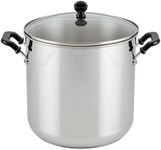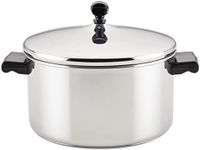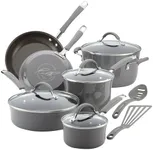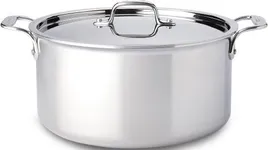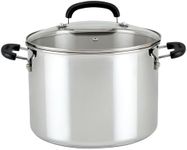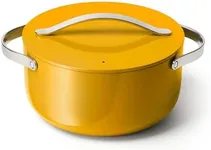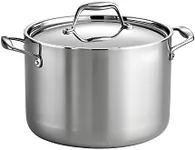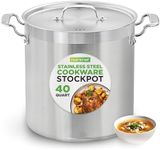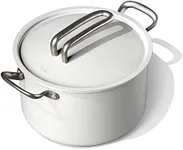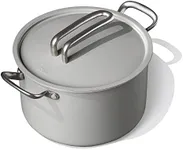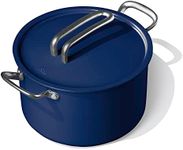Buying Guide for the Best stockpots
Choosing the right stockpot can make a significant difference in your cooking experience. Stockpots are essential for making soups, stews, broths, and even boiling pasta. When selecting a stockpot, it's important to consider several key specifications to ensure you get the best fit for your cooking needs. Here are the main factors to consider when picking a stockpot.MaterialThe material of a stockpot affects its heat conductivity, durability, and maintenance. Common materials include stainless steel, aluminum, and copper. Stainless steel is durable, non-reactive, and easy to clean, making it a popular choice for most home cooks. Aluminum is lightweight and conducts heat well but can react with acidic foods unless it has a non-stick coating. Copper offers excellent heat conductivity but requires more maintenance and is usually more expensive. Choose a material based on your cooking habits and how much maintenance you're willing to do.
SizeStockpots come in various sizes, typically ranging from 6 to 20 quarts. The size you need depends on the quantity of food you usually cook. For small families or occasional use, a 6 to 8-quart pot may suffice. For larger families or if you like to make big batches of soup or broth, consider a 12 to 16-quart pot. If you often entertain or cook in bulk, a 20-quart pot might be the best choice. Think about your cooking habits and the number of people you usually cook for when selecting the size.
ShapeStockpots generally have a tall, narrow shape, which helps to minimize evaporation and retain flavors. However, some stockpots have a wider base, which can be useful for browning meat or sautéing vegetables before adding liquids. If you often start your recipes with browning or sautéing, a wider base might be more convenient. Otherwise, a traditional tall, narrow stockpot is ideal for making broths and soups.
LidA good lid is essential for a stockpot as it helps to retain heat and moisture. Lids can be made of the same material as the pot or glass. Metal lids are durable and can handle high temperatures, while glass lids allow you to monitor the cooking process without lifting the lid. If you prefer to keep an eye on your food without losing heat, a glass lid might be more suitable. Otherwise, a metal lid is a reliable choice.
HandlesHandles should be sturdy and heat-resistant for safe and easy handling. Look for stockpots with riveted handles, as they are more secure and durable. Some handles are designed to stay cool on the stovetop, which can be a helpful feature. Consider how often you'll need to move the pot and whether you'll be handling it while it's hot when choosing the handle type.
CompatibilityEnsure the stockpot is compatible with your stovetop. Most stockpots work well on gas and electric stoves, but if you have an induction cooktop, you'll need a pot with a magnetic base. Check the manufacturer's specifications to confirm compatibility with your stovetop. This is crucial to ensure efficient cooking and avoid any damage to your cookware or stovetop.
WeightThe weight of the stockpot can affect its ease of use. Heavier pots, like those made from stainless steel or copper, offer better heat distribution but can be cumbersome to handle, especially when full. Lighter pots, such as those made from aluminum, are easier to maneuver but may not distribute heat as evenly. Consider your strength and comfort level when choosing the weight of your stockpot.
